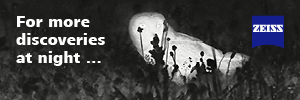| Line 1: | Line 1: | ||
| − | ;[[: Category: | + | ;[[: Category:Larus|Larus]] novaehollandiae |
[[Image:Silver_Gulls.jpg|thumb|550px|right|Photo by Neil Fifer<br />Photo taken: Sydney, Australia.]] | [[Image:Silver_Gulls.jpg|thumb|550px|right|Photo by Neil Fifer<br />Photo taken: Sydney, Australia.]] | ||
==Identification== | ==Identification== | ||
| Line 20: | Line 20: | ||
{{GSearch|larus+novaehollandiae}} | {{GSearch|larus+novaehollandiae}} | ||
*[http://www.aviceda.org/abid/birdimages.php?action=birdspecies&fid=41&bid=525 View more images of this species on the ABID] | *[http://www.aviceda.org/abid/birdimages.php?action=birdspecies&fid=41&bid=525 View more images of this species on the ABID] | ||
| − | [[Category:Birds]][[Category: | + | [[Category:Birds]][[Category:Larus]] |
Revision as of 12:12, 16 September 2008
- Larus novaehollandiae
Identification
40-45cm. White head, tail and underparts, with a light grey back and black-tipped wings, bill, legs and eye-ring are bright orange-red.
Distribution
Australia and surrounding islands.
Taxonomy
Two subspecies are recognized: novaehollandiae and forsteri. Some authorities in addition also recognize gunni. Red-billed Gull was recently split from this species.
Silver Gull is sometimes placed in genus Chroicocephalus.
Habitat
Near water. Rarely seen inland.
Behaviour
It is a scavenger; its diet also includes worms, fish, insects and crustaceans.
They nest in large colonies on offshore islands. Two broods are often raised in a year. Both sexes share nest-building, incubation and feeding duties. 3 eggs are laid in a shallow nest scrape, lined with vegetation.




